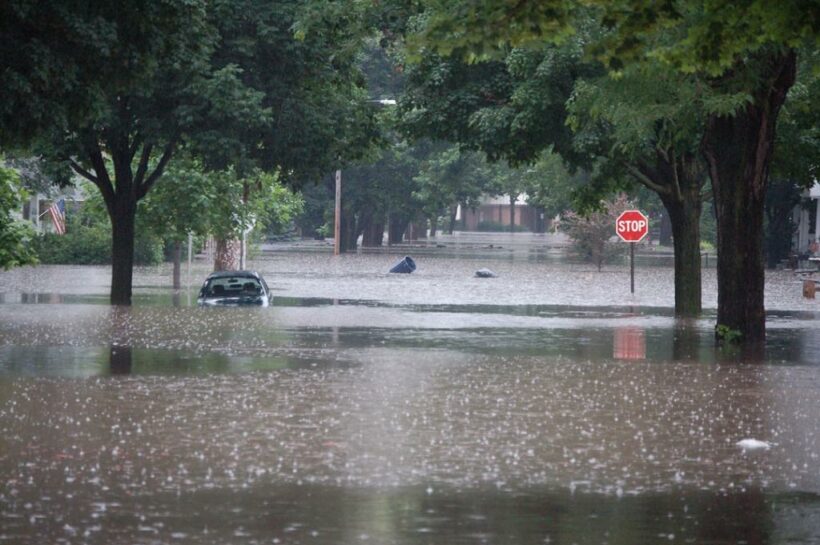Earlier this week, the U.S. Global Change Research Program released the United States’ Fifth National Climate Assessment, an overview of the effects climate change is having on the country.
By: Cristen Hemingway Jaynes
The main message of the assessment is clear: Every part of the country will experience weather extremes due to climate change.
“There is not a part of the U.S. that gets a pass on climate impacts,” a Biden administration official said, as Inside Climate News reported.
The assessment is a federal report mandated by Congress that provides a comprehensive overview of climate change effects across the U.S.
All over the country, changes in climate are causing more intense drought, heat waves, wildfires, floods and hurricanes, which are taking an increasing toll on people’s mental health.
Each region of the country will experience its own climate-related disasters. For example, the Northeast has some of the most extreme rainfall and flooding, the Biden administration official said.
“In the Northeast, we have some of the oldest infrastructure in the country and a lot of it obviously faces pretty extreme conditions given the kind of strong seasonality we experience here,” said Dave Reidmiller, co-author of the Northeast chapter of the assessment and director of the Gulf of Maine Research Institute’s Climate Center, as reported by Inside Climate News. “So whether that is dams or our electrical grid, or roadways, culverts, wastewater treatment plants, you name it, they all face risks from climate change and the fact that they are aging means that there’s likely to be increased risk to them.”
Residents in the Southeast suffer from stifling heat and humidity. While in the West, drought and wildfires affect air quality and put stress on water supplies and agriculture.
Coastal areas are experiencing flooding with high tide that is getting worse as sea-level rise washes through neighborhoods. Midwestern states are grappling with a combination of extreme heat, drought and flooding, which are all affecting agriculture.
The assessment found that nationwide climate impacts are disproportionately affecting those who are less wealthy, as well as Black and Indigenous communities and people of color.
“The institutions of slavery and intergenerational ownership of individuals as property, Jim Crow segregation, and housing discrimination have resulted in many BIPOC (Black, Indigenous, and People of Color) communities living in neighborhoods that are disproportionately exposed to environmental risks and with fewer resources to address them when compared to majority White communities,” the report said.
Other regions of the country have inequities as well, according to the assessment.
“Underserved and overburdened communities face disproportionate risks and impacts from climate change, which exacerbates existing social and economic inequities. Some overburdened communities are at higher risk of climate impacts due to ongoing systemic discrimination, exclusion, and under- or disinvestment. These social inequities contribute to persistent disparities in the availability of resources needed to prepare for, respond to, and recover from climate impacts,” a press release from the White House said.
Along with the report, the White House announced $6 billion in investments toward climate resilience efforts, including bolstering the aging infrastructure of the electric grid, supporting conservation efforts, reducing flood risks and advancing environmental justice.
All regions of the U.S. have started making efforts to adapt to climate change and curb their contributions to the climate crisis. The most action has come from the Northeast and Southwest, including California, Inside Climate News reported.
Most regions of the country are experiencing a billion-dollar disaster an average of every three weeks, especially in the Midwest and along the coasts.
In the Southeast, population growth is causing more people to be exposed to climate impacts like hurricanes, rising sea levels and extreme heat. At the same time, adaptation plans have frequently been based on information that is limited or outdated and does not account for future risks.
”We’re moving more people into harm’s way, and we’re not doing it in a very coordinated way,” said Kathie Dello, a North Carolina state climatologist who is one of the co-authors of the study and director of the North Carolina State Climate Office, as reported by Inside Climate News. “Our cities just aren’t moving fast enough to keep up with climate change.”
Sea-level rise is a consistent threat to coastal communities, with the Southeast particularly at risk. Sea levels have risen by six inches relative to land elevations from 1970 to 2020. Future projections are for an additional 16 to 23 inches by mid-century and two to seven feet by the end of the century. Saltwater has already inundated coastal estuaries and forests, reducing their ability to sequester carbon.
“Climate change is here,” says Arati Prabhakar, President Joe Biden’s chief science adviser, as Nature reported. Prabhakar added that the country is making significant new investments in climate measures.
The government’s $2 billion in funding for community-based environmental justice grants and $3.9 billion for modernizing the electric grid, as well as several hundred million aimed at helping secure reliable community water supplies and flood resilience, offer some hope.
“This is not about curling up in a corner in despair,” said Rachel Cleetus, lead economist and policy director for the Climate and Energy Program at the Union of Concerned Scientists, as reported by Nature. “There are very concrete steps we can take to cut our emissions and to promote climate resilience.”






